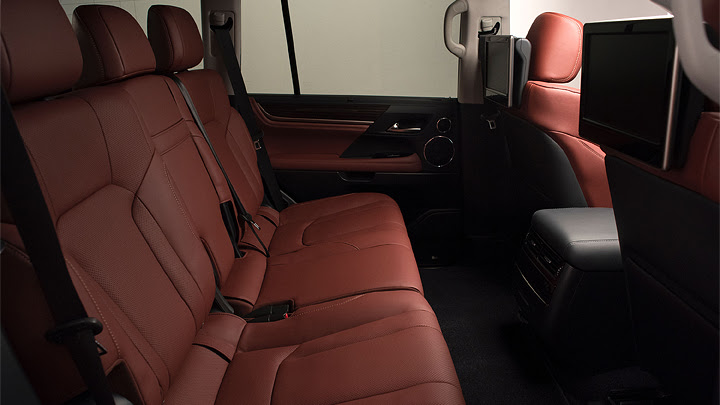
Lexus’s situation with LX manages to be slightly better than that and slightly worse, at the same time. On the one hand, it’s easier to get satisfactory profits because this is essentially a luxury variation of Toyota’s well-known Land Cruiser, which means its development costs shouldn’t have been high. On the other hand, Lexus still struggles to compete with automakers such as the German trio, and its model is currently one of the oldest in its class. Now, seven years are already a lot among some compact cars, but luxury SUVs rely on the aforementioned difficulties to last somewhat longer between updates. This article’s model, for instance, was facelifted in 2012, and now brings another set of partial changes, albeit deeper, in order to at least retain those drivers whom it already conquered.
Even if there were no images, it would only take knowing this is a Lexus to know what was its biggest change. The spindle grille appeared once again, more dominant than ever, but this is one of the few vehicles in which it doesn’t seem too large. Sure, that is part of the charm of this design language, but it’s also interesting to know that some cars make it look actually well-proportioned. The very angular lights are there once again, whether regular, fog or daytime units, and all of them bring LEDs as standard. The rear end, in turn, brings a set of gorgeous L-shaped lights which bring more diodes, and a retouched bumper. However, the surprise lies on Lexus having changed the sides as well: the D-pillar is totally new, in order to give a thicker chrome insert and a little kink to the rearmost windows.










As usual, even more news appear in the cabin. The new LX offers a new panoramic camera, that shows front, rear and side images to help you park, drive through tight spaces, or deal with a trailer. The images are displayed on a 12.3” touchscreen which is also new. A new analog clock uses LEDs, aluminum surround, and GPS-regulated time-change function. The Eyes Free technology was also added, meaning you can access several Apple functions through talking to Siri. The audio system is complete, including iTunes and HD radio, and can use either Lexus Premium, which features nine speakers and comes as standard, or the Mark Levinson unit, which sports ten more and 450 watts. Oh, and there are more electronic safety systems as well. Everything paired to four new options of wood trim and a new steering wheel.
When it comes to powertrain, LX’s sole options remains the 5.7-liter V8, which generates 383 hp of power. The difference lies on the (automatic) transmission, which uses eight speeds now. This duo works with the Drive Mode Select, as well as the suspension, to allow the user suit the vehicle to its needs. The Eco option engages even the climate control to save fuel; Comfort tunes the variable suspension towards a smoother ride; Sport improves the dynamic behavior and reduces steering assist; and Sport+ sets the suspension as firm as possible to make LX more agile. Such bundle of novelties is way far from capable of snatching lots of new customers, but it’ll certainly succeed at keeping the current ones. The refreshed LX will go on sale soon, starting with North-American markets.